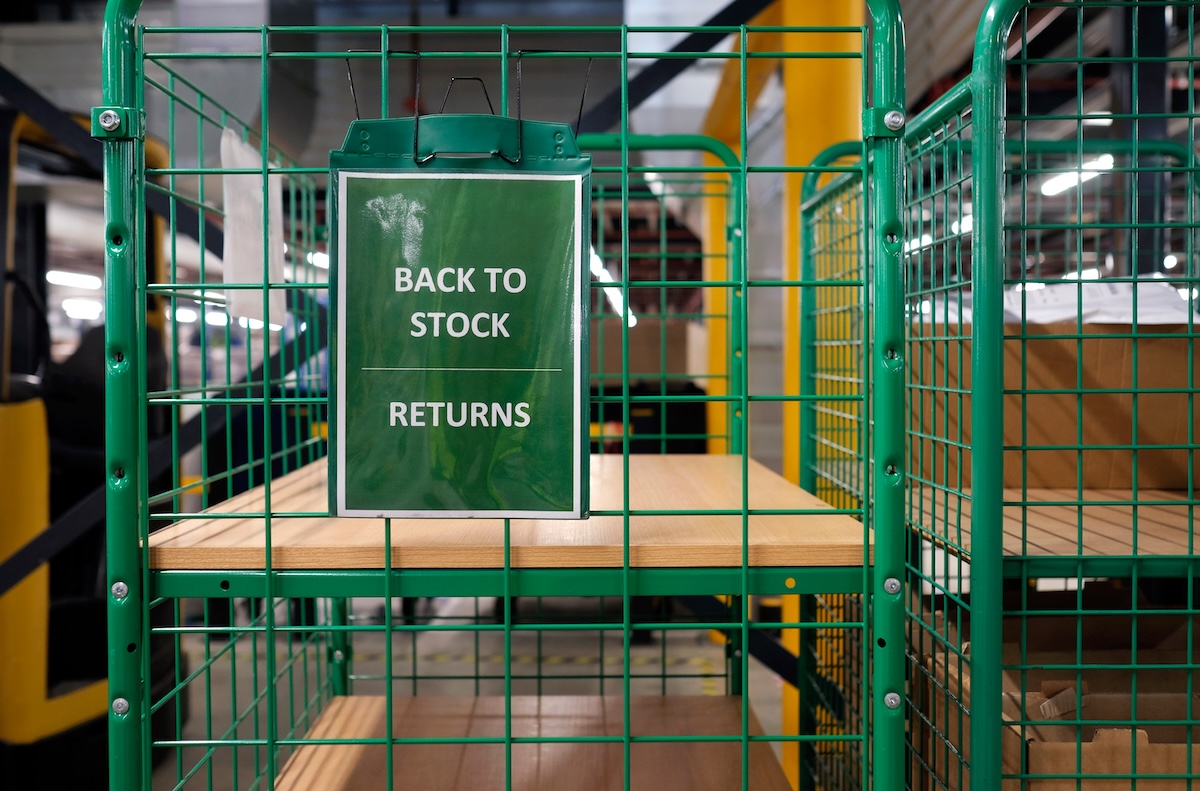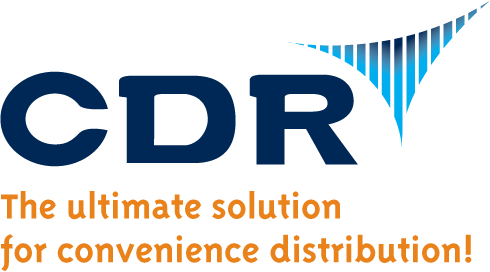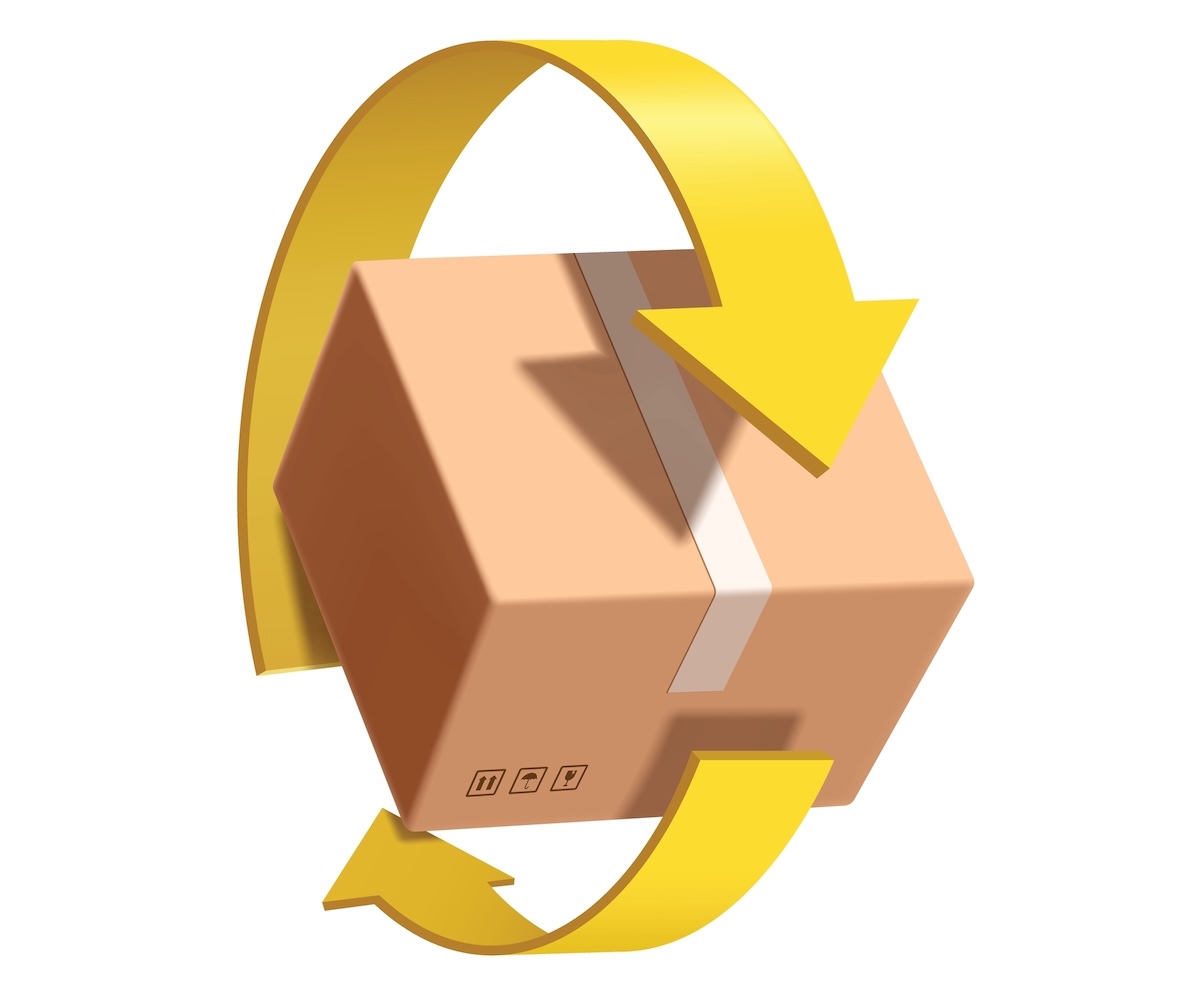Returns are part of the job in convenience distribution — but with the right approach, you can keep them from disrupting your warehouse or cutting into your margins.
If you run a convenience distribution operation, you already know how quickly returns can pile up. Maybe it’s an expired product that can’t sit on a store shelf, a damaged case that came back on the truck, or a vendor buy-back after a promotion ends. Each one feels small in isolation, but together they add up to lost time, wasted warehouse space, and shrinking profit margins.
The truth is, you can’t avoid returns. But you can control how they’re handled. With a clear process and the right tools in place, you can turn what feels like a headache into a manageable part of your operation — one that protects your bottom line and keeps your customers happy.
The Challenge of Returns in Convenience Distribution
Convenience distribution has unique return challenges that other industries don’t face. Your product mix is high-volume, high-turnover, and often perishable. Store managers expect flexibility when something doesn’t sell or when deliveries aren’t quite right, and it’s your warehouse that absorbs the impact.
You’re probably dealing with scenarios like:
- Expired products that need to be pulled before they cause shrink.
- Damaged items that can’t go back into stock.
- Wrong or duplicate deliveries that take extra steps to sort out.
- Vendor buy-backs for promotional or seasonal goods.
Each of these scenarios eats into efficiency. Without a streamlined process, returns disrupt outbound orders, tie up labor, and throw off inventory accuracy. In a business where margins are already tight, that’s not something you can afford to overlook.
Best Practices for Handling Returns
When it comes to returns, the difference between a minor inconvenience and a major disruption is all about process. The faster and more consistently your team handles returned products, the less impact they’ll have on your warehouse flow and your bottom line.
Here are some best practices that can make a big difference in convenience distribution:
- Set clear policies: Everyone involved, from drivers to store managers to warehouse staff, should know exactly how returns are logged and processed. Clear policies prevent confusion and ensure returns don’t slip through the cracks.
- Process at the dock: Don’t let returned items linger. Have drivers or receiving staff scan and document them immediately when they come back. This keeps products from getting lost in the shuffle and ensures accurate credits.
- Sort quickly and consistently: Not every return is handled the same way. Some products can go back on the shelf, some must be written off, and others go back to vendors. A quick, consistent process for deciding the right path saves time and reduces mistakes.
- Tie credits directly to inventory: Customers and vendors expect credits to be handled fast. The best way to do this is by linking return processing directly to your inventory and accounting systems, so nothing slips through the cracks.
- Keep communication flowing: A store manager who sends back products wants reassurance the credit will be applied quickly. Clear, timely communication builds trust and keeps those customer relationships strong.
Handled this way, returns stop being a bottleneck and start becoming a routine — one your team can manage without slowing down the rest of your operation.
Building an Effective Reverse Logistics Process

If you want returns to flow smoothly through your warehouse, you need more than quick fixes — you need a clear reverse logistics process. Think of it as a mirror image of your outbound operation: while your warehouse is designed to ship products out efficiently, it should also have a system for handling the products that come back in.
Here are a few ways to strengthen your process:
- Designate a dedicated return area: Mixing returns with regular inbound or outbound inventory is a recipe for confusion. A separate space for handling returns ensures they’re processed quickly without slowing down other operations.
- Equip drivers with the right tools: In convenience distribution, drivers often play a big role in logging returns during their routes. Mobile tools that let them scan and document items before they even reach the warehouse save time and improve accuracy.
- Collaborate with vendors: Many returns, especially promotional or seasonal products, are headed back to vendors. Building strong vendor relationships and establishing buy-back agreements helps you move products out of your warehouse faster and reduce losses.
- Use scanning and barcoding: Manual entry leaves too much room for error. Scanning returned items ensures data accuracy, makes tracking easier, and helps your warehouse team move products through the system faster.
An effective reverse logistics process doesn’t just keep your warehouse organized — it protects your margins by making sure every returned product is accounted for and handled in the most efficient way possible.
Minimizing the Impact on Inventory and Operations
Even with the best processes in place, returns will always create extra work. The key is making sure they don’t throw off your inventory accuracy or slow down outbound orders. In convenience distribution, where margins are tight and product turnover is high, that balance is critical.
Here’s how you can keep returns from disrupting the bigger picture:
- Track return reasons: Don’t just process a return and move on. Record why it came back — expired, damaged, mis-picked, or vendor recall. Over time, you’ll see patterns that point to larger problems, like frequent mis-picks or recurring supplier issues. Fixing the root cause reduces future returns.
- Use data to reduce waste: If you’re noticing that certain products often come back expired, it may be a sign that order sizes or delivery frequency need adjusting. Small changes here can cut down on shrink and improve customer satisfaction.
- Separate perishables from non-perishables: Returned perishables should be processed and removed immediately to avoid contamination risks. Non-perishables, on the other hand, may be restocked or returned to the vendor. Clear separation speeds things up and keeps your warehouse compliant and safe.
- Balance return handling with outbound flow: Returns shouldn’t bottleneck your shipping schedule. Having a dedicated team or scheduled return-processing times ensures your warehouse keeps moving, without outbound orders paying the price.
By keeping a close eye on returns and their impact, you turn them into a source of insight rather than just a cost center. Over time, this approach helps you tighten operations, reduce waste, and protect your margins.
How ERP Systems Support Return Management in Convenience Distribution

Managing returns efficiently takes more than a good warehouse process — it also takes the right technology. An ERP system designed for convenience distribution ties everything together, giving you the visibility and control you need to handle returns without slowing down your operation.
Here’s how DAC ERP from CDR Software makes the difference:
- Instant inventory updates: As soon as a driver logs a return on their handheld or warehouse staff scans it at the dock, DAC ERP updates your inventory in real time. No lag, no manual spreadsheets, no guesswork. This keeps stock counts accurate and prevents costly stockouts or overstocks.
- Automated credit workflows: Whether it’s issuing a store credit or processing a vendor buy-back, DAC ERP automates the entire credit process. Returns are immediately tied to invoices, ensuring credits are applied quickly and accurately — reducing disputes and keeping both customers and vendors satisfied.
- Return-to-vendor (RTV) handling: Vendor buy-backs are common in convenience distribution. DAC ERP tracks RTV agreements, automates credit requests, and generates the proper documentation so you can move unsellable items out of your warehouse faster while protecting your margins.
- End-to-end visibility: With DAC ERP, you don’t just see a returned item — you see why it came back, its financial impact, and where it needs to go next (restock, disposal, or vendor return). This insight helps you spot patterns, reduce preventable returns, and tighten operations.
- Cross-department coordination: Returns touch multiple teams — warehouse, drivers, accounting, and customer service. DAC ERP ensures everyone is working from the same data, reducing errors, eliminating delays, and keeping your business moving.
Unlike generic ERP systems, DAC ERP is purpose-built for convenience distributors. From route accounting to mobile scanning to automated vendor credit tracking, it’s designed around the unique workflows of your industry — so you spend less time fixing return issues and more time keeping your operation profitable.
Conclusion
In convenience distribution, returns will always be part of the job. But when you manage them efficiently, they don’t have to drain your time, space, or profit margins. With clear policies, a structured reverse logistics process, and technology that ties everything together, returns can move through your warehouse as smoothly as your outbound orders.
The payoff is significant: fewer disruptions, stronger customer relationships, and better visibility into the trends driving returns in the first place. Instead of treating returns as an unavoidable cost, you can turn them into a controlled process that supports your overall operation.
If you’re ready to simplify how your team handles returns — from the driver’s handheld to the warehouse floor to your accounting system — it may be time to see what the right ERP can do for you.
CDR Software’s DAC ERP is built specifically for convenience distributors, helping you streamline return management while strengthening your entire operation.
Ready to take the headaches out of return management? Discover how DAC ERP helps convenience distributors streamline reverse logistics, protect margins, and keep operations running smoothly. Contact us today.
FAQs: Managing Warehouse Returns in Convenience Distribution
What makes return management more challenging in convenience distribution?
Returns in convenience distribution often involve perishable products, vendor buy-backs, and high-volume SKUs with short shelf lives. This creates more urgency and complexity compared to industries with longer product cycles.
How can I reduce the number of returns in my distribution business?
Start by tracking the reasons for returns — such as mis-picks, damages, or expired items. Using that data, you can adjust order accuracy, delivery schedules, or vendor agreements to minimize preventable returns.
What role does reverse logistics play in managing returns?
Reverse logistics ensures that returned products move through the warehouse with the same efficiency as outbound shipments. It includes processes for receiving, sorting, and directing returns to the correct destination — whether that’s restocking, vendor credit, or disposal.
How do returns affect warehouse inventory accuracy?
Unprocessed or poorly tracked returns can throw off stock counts, leading to inaccurate inventory and poor decision-making. Using scanning tools and ERP integration ensures returns are logged and updated in real time.
How can ERP systems help convenience distributors manage returns?
An ERP system automates the return process by updating inventory, applying credits, and providing visibility across departments. For convenience distributors, solutions like DAC ERP streamline these workflows and reduce errors, ensuring returns don’t disrupt operations.

